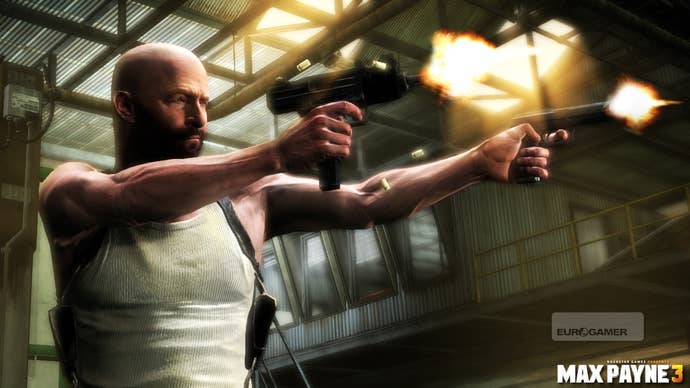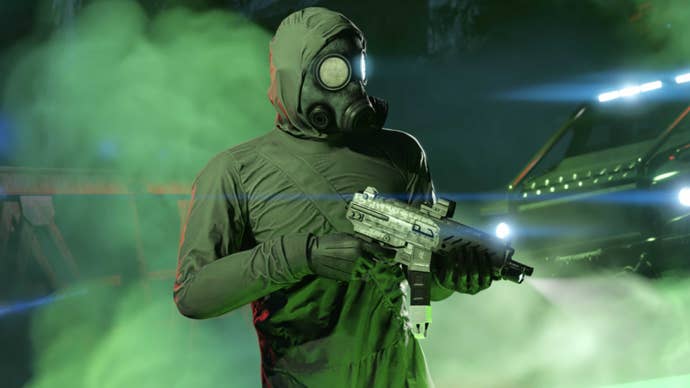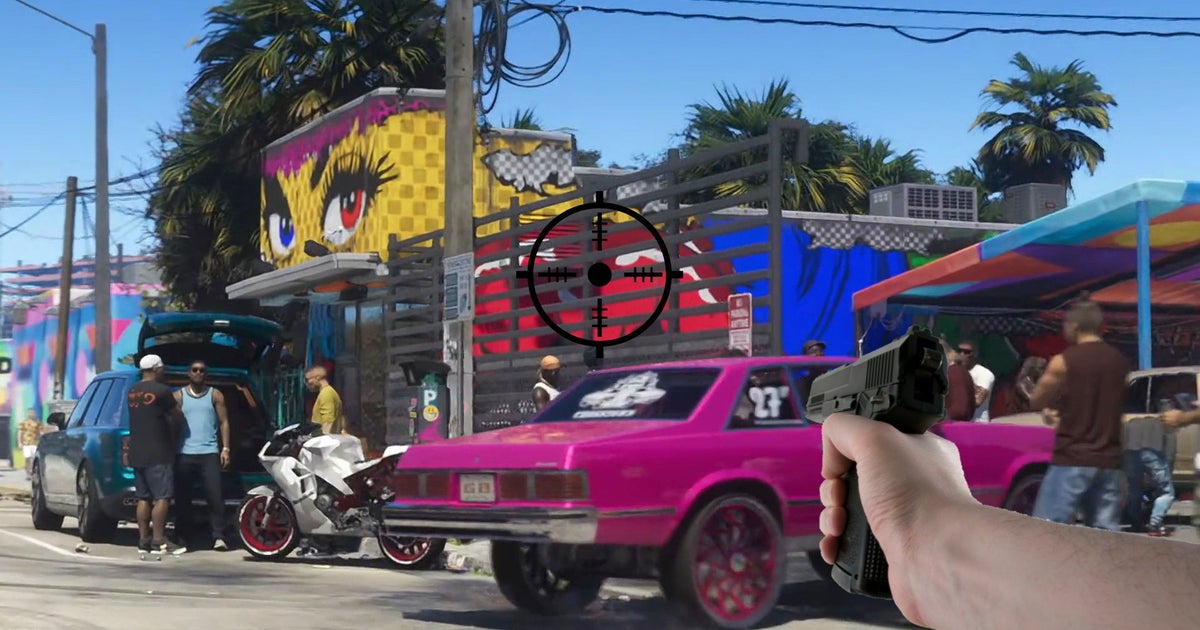Have you ever heard Ken Levine talk about the act of jacking a car in GTA 3? Probably not one you had on your bingo card for today.
“It’s actually a very complex task,” he told the fantastic Irrational Games podcast back in 2010. “You’ve got to run, you’ve got to keep up next to the car, you’ve got to open the door, you’ve got to pull the person out, you’ve got to get in and close the door behind you. Back in the Looking Glass days, I think if we were to do something like that, it would be like, ‘Press the Shift, Y key or X key to run. Press O to open the door. Press Alt+P to pull the guy out. Press G to get in the car.’ Whereas in GTA 3, you hit the triangle key, and that whole thing happens.”
In other words, Rockstar figured out what we wanted to do in advance, and made it easy for us to pull it off. “That ability to interpret your actions basically made you forget about all that complexity and just focus on the depth of the game,” Levine said. “And you get there without giving up the things that give a player a huge amount of choice. That’s hard to do.”
It’s tempting to characterise this moment as a noughties sea change in game design – one that ushered in the multi-platform era and paved the way for the likes of BioShock, which aimed to reduce the complexity of classic computer games without sacrificing their depth. But the truth is, GTA had been doing this since the ’90s. While Irrational was working on System Shock 2, the original Grand Theft Auto launched on PC and PlayStation. In it, you could press Enter and watch your avatar perambulate to the nearest vehicle, toss out its occupant, and clamber inside.
Automation has been a central part of Rockstar’s deal since before the birth of its flagship GTA studio in Edinburgh. The 2D games made by BMG Interactive gently altered your steering to bring you parallel with the road after turning a corner – while GTA 2 tilted the flow of your bullets slightly toward the nearest Yakuza goon or police officer. Both decisions were a mercy considering the quirks of navigating a city from a top-down perspective. Survival was already challenging enough.
GTA 3 offered a crude form of manual aiming on the PC, turning Silent Claude’s revenge quest through Liberty City into a very rudimentary third-person shooter. But that’s counter to the common public experience of the game on console, where it featured lock-on aiming the moment you stepped out of a car. It would be fair to say that Rockstar North used auto-aim as a crutch throughout the PS2 period; while its driving models were extraordinary feats of physics and high drama, the studio was far from mastering the handling of a gun. It made sense to opt out of that race entirely – particularly in a world where enemies could approach from any angle.
Auto-aim wasn’t just a practical solution, though. GTA’s developers actively enjoyed the unusual possibilities it afforded – as evidenced by 2003’s Manhunt. For the most part, Rockstar’s most notorious game is a stripped-back stealth game in the mode of Splinter Cell – yet its sneaking levels are interspersed with hardcore cover-shooting sequences. Given that you’re able to snap your shotgun to the position of any Hunter that steps out in front of you, Rockstar ups the challenge in other ways, making your avatar vulnerable when exposed and throwing large numbers of enemies into its streets and malls.

With the business of aiming already handled, your brain is freed up for other tactical considerations: the distance of your target, the range of their weapon, and the rhythmic cycle of weapon reloads that opens up moments of opportunity. Auto-aim turns out not to be the death of depth, but rather a way to shift your attention to other considerations that might only make up the background in rival shooters.
We’re two decades on from all that now, of course, and Rockstar has long since caught up with the rest of the industry when it comes to gunplay. Try GTA V with manual aiming enabled and you’ll find a perfectly respectable example of the form. It would seem that Max Payne 3 was a useful lesson for Rockstar at large.
Yet GTA Online on consoles still defaults to assisted aim servers, and over the past year or so, I’ve become rather partial to its strange combat cocktail. These gunfights are a matter of twitchy course correction and grappling with physics, much as driving was back in GTA 3’s Liberty City. Opponents in most third-person shooters tend to stay upright until the moment of death; Rockstar’s, by contrast, are floor magnets. Hit them for non-lethal damage in the chest, leg or shoulder and you’ll watch the impact carry them backward onto the ground, where they loll around like overpaid footballers faking a foul. Busy shootouts take on the peculiar pace of whac-a-mole – as your enemies rise to their feet, and you put them down again and again.

With practice, you learn to turn the systems to your advantage. While auto-aim directs your reticle towards the centre of an enemy’s chest, you’re free to alter its position from there – easing the thumbpad downward so that the barrel tilts towards your target’s head, ending the whac-a-mole once and for all. Finishing a gunfight early is desirable since GTA Online, like Manhunt, makes you incredibly vulnerable; your health bar is vanishingly small, and even Super Heavy Armour will only increase your survivability to match a protagonist in Rainbow Six or SWAT 4. Over time, the slightly absurd habit of hitting L1 and right-stick to don yet another bulletproof vest mid-battle becomes second nature.
With GTA 6, Rockstar has the option to finally do away with a lot of this. In the more than ten years since its last series entry, dedicated shooters like COD have pushed aim assist forward by leaps and bounds, so that controllers can play happily with mouse and keyboard in Warzone. The lock-on showdowns of Liberty City are now truly ancient history.
But on balance, I hope Rockstar North continues to design its missions around a fairly extreme take on auto-aim. Not because it needs to, but because at this point, an element of automation has become a part of the studio’s DNA – one of many reasons that its games tickle the brain differently to those of its peers.

